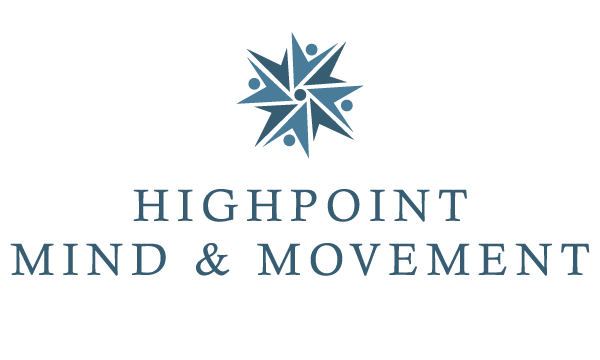The Psoas Muscle – A Key to Good Balance
You may be unfamiliar with it, but it is one of the most essential muscles in our bodies – the psoas (so-az) muscle. The psoas drastically impacts our health and well-being, from our stability and balance as we walk, bend, and turn, to the way we feel emotionally.
While the psoas muscle is commonly referred to in the singular, it is actually comprised of the psoas major, psoas minor, and the iliacus muscles, with one set of each on either side of the body. It connects to the spine, lying deep within our abdominal cavity and with its connective tissue it extends from the diaphragm all the way down through the pelvis to the pelvic floor, joining with the upper part of each leg.
The psoas is the only muscle that links the trunk of the body to the legs. This is why it is important for stability – its anatomical function is to connect the upper body to the lower body, the outside to the inside, the legs to the spine, and the front to the back. It stabilizes the hip/leg connection and is active when we bend our legs to walk, get up from lying down, rotate our body from side to side, bend down, sit upright, and stand erect. Any time we are moving, our psoas is involved. We want it to be relaxed and responsive in order to keep us balanced and strong, able to catch our balance when an impending fall might otherwise take us down.
In addition to the structural functions of the psoas muscle, it is linked to our central nervous system through a neurological connection with our primitive, reptilian brain. Because of this, the psoas functions instinctively whenever we feel threatened – automatically contracting as a means of defense and protection. It is the primary muscle involved when the sympathetic nervous system (our fight or flight mechanism) is activated. Trauma, sustained stress, or even everyday tensions will tighten and shorten the psoas, storing tension deep within us. This can lead to tightness all over the body, chronic pain, poor balance, and underlying anxiety or hyper-reactivity. It is one of the principal players in psychosomatic experiences and the reactive stress response. It is speculated that the psoas muscle underlies post-traumatic stress disorder (PTSD) and may, with careful therapeutic methods, contribute to healing. We are finding that this muscle is essential for emotional well-being, physical balance, whole-body coordination, and stability on many levels.
“Restoring our psoas muscle to a relaxed, supple state is crucial not only for physical health and balance but also for mental and emotional well-being. ”
There are simple movements drawn from Yoga, Brain Gym®, Tai Chi, QiGong, and physical therapy that have a profound effect on the psoas muscle, releasing tension, strain, and stored emotions. I incorporate many psoas release techniques into my classes, including Stand Tall – Don’t Fall, to improve posture, balance, emotional equilibrium, and to restore optimal brain/body function.
Releasing the psoas helps to dismantle a multitude of muscular and skeletal compensations, unravel entrenched emotional patterns, and restore optimal neural functioning to support new energy, good balance, and a strong brain/body connection.
As we slowly release stored tension by lengthening and softening the psoas muscle, we will begin to feel an internal opening and an inner awareness. When we stand and then walk, we have an increased sense of uprightness, an awareness of our hips and core being somewhat “solid” and yet fluid, and an ease of movement that is surprising. Emotionally we feel refreshed and relaxed, and mentally much clearer. By freeing the psoas to move fluidly, we can experience a deep sense of calm, flexibility, emotional equilibrium, and physical stability.
Try It For Yourself!
Release stored tension through these simple, gentle movements combined with breathing. Find a quiet place with a firm chair and a mat so you can you begin to release and lengthen your psoas muscle with the following easy exercises:
Knee to chest. Sit on a firm chair and bring one knee to your chest by clasping your hands just below your knee and drawing it toward you. Breathe deeply into your belly and exhale, several times. Repeat with the other leg. You can also do this lying on your back.
Leg extension. Lie on your back on a firm bed or a mat on the floor. Bend both knees so your feet are flat on the floor. Roll your pelvis so that your spine is fully in contact with the floor (or as close as is comfortable for you). Then, very slowly, extend your right leg until it is resting on the floor. If your back has arched up off the floor, gently rotate your hips until your spine is flat against the floor. Hold for 1 minute. Repeat with your left leg.
If the full movement is difficult or causes strain, place a firm pillow under the extended leg until your muscle learns to relax. The psoas will eventually lengthen, allowing you to fully extend your leg.
The views expressed in this article belong solely to S. Christina Boyd based on 30 years of clinical experience as a movement therapist. If you would like further reading, please explore the source and related information provided.
-
NCBI, The National Center for Biotechnology Information https://www.ncbi.nlm.nih.gov/Anatomy, “Bony Pelvis and Lower Limb, Psoas Major” Marco A. Siccardi; Muhammad Ali Tariq; Cristina Valle.
Brain Gym®, Teachers Edition Paul E. Dennison and Gail E. Dennison
“The Emotional Core: aka the Psoas” https://www.pilatesnosara.com/
Liz Koch https://coreawareness.com/about/psoas/
The Trauma Conscious Yoga Institute https://traumaconsciousyoga.com/psoas


